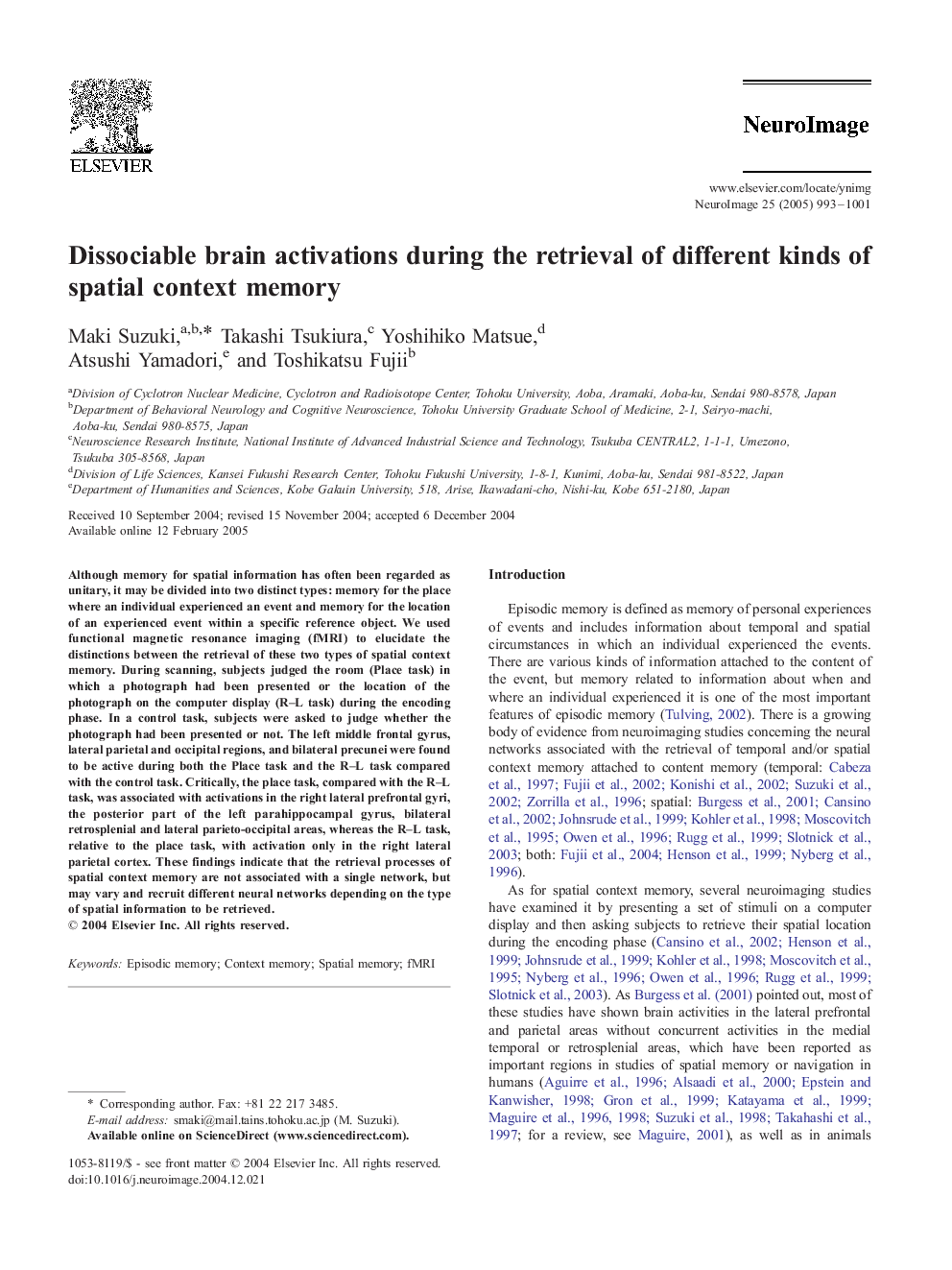| Article ID | Journal | Published Year | Pages | File Type |
|---|---|---|---|---|
| 9197864 | NeuroImage | 2005 | 9 Pages |
Abstract
Although memory for spatial information has often been regarded as unitary, it may be divided into two distinct types: memory for the place where an individual experienced an event and memory for the location of an experienced event within a specific reference object. We used functional magnetic resonance imaging (fMRI) to elucidate the distinctions between the retrieval of these two types of spatial context memory. During scanning, subjects judged the room (Place task) in which a photograph had been presented or the location of the photograph on the computer display (R-L task) during the encoding phase. In a control task, subjects were asked to judge whether the photograph had been presented or not. The left middle frontal gyrus, lateral parietal and occipital regions, and bilateral precunei were found to be active during both the Place task and the R-L task compared with the control task. Critically, the place task, compared with the R-L task, was associated with activations in the right lateral prefrontal gyri, the posterior part of the left parahippocampal gyrus, bilateral retrosplenial and lateral parieto-occipital areas, whereas the R-L task, relative to the place task, with activation only in the right lateral parietal cortex. These findings indicate that the retrieval processes of spatial context memory are not associated with a single network, but may vary and recruit different neural networks depending on the type of spatial information to be retrieved.
Related Topics
Life Sciences
Neuroscience
Cognitive Neuroscience
Authors
Maki Suzuki, Takashi Tsukiura, Yoshihiko Matsue, Atsushi Yamadori, Toshikatsu Fujii,
